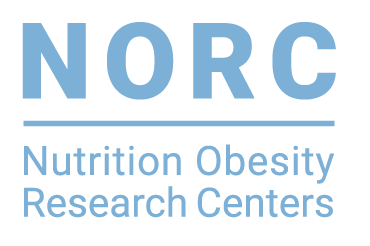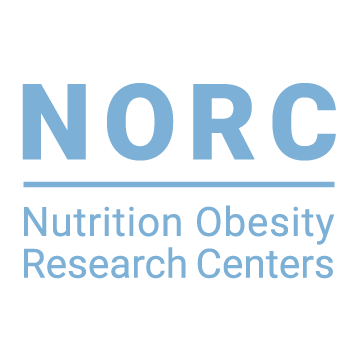University of Colorado
 Josiane L. Broussard, PhD
Josiane L. Broussard, PhD
Assistant Research Professor, Department of Integrative Physiology
Dates of Funding: 2017-2018
Contact Information
Josiane.Broussard@colorado.edu • Phone: (303) 735-1923
The Impact of Insufficient Sleep on Peripheral Metabolic Tissues
Short nightly sleep duration and untreated sleep disorders are now recognized as risk factors for metabolic diseases with more than 35%of Americans sleeping less than the recommended 7 hours/night. Acute, experimental sleep restriction studies have demonstrated inadequate sleep alters glucose homeostasis, primarily by decreasing whole-body insulin sensitivity. However, the mechanisms responsible for the adverse effect of sleep restriction on insulin sensitivity are not known and understanding the effects of sleep restriction on other metabolic tissues is in its infancy. Our long-term goal is to demonstrate the importance of adequate sleep duration and to establish sleep as a third pillar of health—in addition to diet and exercise—in the maintenance of cellular, tissue and whole-body metabolic homeostasis. The overall objective for this project is to determine how insufficient sleep impairs insulin sensitivity in peripheral metabolic tissues biopsied from healthy young lean men and women after normal and insufficient sleep.

Scott Ferguson, PhD
Post-Doctoral Fellow
Dates of Funding: 2017-2018
Contact Information
scott.ferguson@ucdenver.edu • Phone: (316) 304-5443
Impact of dietary nitrate supplementation via beetroot juice on skeletal muscle metabolic control and exercise tolerance in sickle cell anemia
Sickle Cell Disease results in severely compromised exercise capacity, and thus the quality of life, for those afflicted. This is due to both central cardiopulmonary and peripheral vascular factors which conspire to reduce maximal oxygen uptake (VO2max) and instill premature fatigue during exercise. SCD results in high rates of hemolysis and the resulting release of free-hemoglobin (HB) rapidly scavenges nitric oxide (NO) resulting in impaired cardiovascular control. Our work focuses on the impact of Hb on skeletal muscle vascular and metabolic control as this is likely a primary mechanism of peripheral vasculopathy and exercise decrement in SCD.
Over the past decade, a plethora of investigations have demonstrated the robust efficacy of dietary nitrate supplementation in the treatment of many prevalent diseases related to loss of NO bioavailability; accordingly, it has been hailed as an “unrecognized nutrient.” Previous investigations in humans and animals have demonstrated that NO3–, when consumed, serves as a powerful controller of muscle O2 perfusion, presumably following its reduction to nitrite (NO2–) and NO in vivo. Collectively, these results strongly support the premise that dietary NO3– as a nutritional therapeutic will ameliorate Hb-mediated NO depletion for patients with SCD, and therefore evoke improved exercise tolerance and quality of life. Thus, this project is aimed at uncovering the mechanistic basis for skeletal muscle dysfunction in SCD and the therapeutic potential of dietary NO3– in preclinical models of this disease. Results from these investigations will directly impact the design of future clinical studies at the University of Colorado, Denver in the coming years.
 Tanya M. Halliday, PhD, RD
Tanya M. Halliday, PhD, RD
Postdoctoral Research Fellow
Dates of Funding: 2017-2019
Contact Information
tanya.halliday@ucdenver.edu • Phone: (303) 724-39083
Influence of Acute Exercise Modality on Hormonal and Behavioral Appetite Regulation and Energy Intake
Lifestyle interventions are often successful in promoting weight loss, but maintenance of weight loss is often unsuccessful due to biological and behavioral adaptations that favor weight regain. The efficacy of exercise for weight loss and weight loss maintenance is often attributed to its effect on increasing energy expenditure, but exercise may assist in weight management by improving appetite regulation and helping individuals control energy intake (EI). While promising, research is limited, findings are inconclusive, and mechanisms by which exercise influences appetite regulation remain unknown. Furthermore, most studies have focused on aerobic exercise (AEx), and the few involving resistance exercise (REx) have primarily studied normal weight adults. Therefore, it is unknown how different exercise modalities, and specifically REx, may uniquely influence appetite regulation and EI in overweight/obese (OW/OB) adults. The primary goal of the proposed study is to compare the acute effects of REx and AEx in OW/OB adults on appetite regulation and EI. To achieve this goal, appetite ratings, appetite-related hormones, eating-related behaviors, and EI will be compared following acute bouts of Rex, AEx, and a sedentary control condition. Results of this study will provide insight on how exercise modality differentially influences acute appetite and EI.
 Shauna Runchey, MD MPH
Shauna Runchey, MD MPH
Research Fellow
Dates of Funding: 2017-2019
Contact Information
Shauna.Runchey@ucdenver.edu • Phone: (720) 848-6470
Mitochondrial targeted antioxidant supplementation and diastolic function in healthy men and women
Heart failure, featuring both left ventricular (LV) diastolic and/or systolic dysfunction affects over 5 million American adults. LV diastolic function typically declines with aging, especially in women. Women (>65 years) are 2 times more likely than men to develop heart failure with preserved ejection fraction. Identifying reversible age-related causal factors leading to the decline in LV diastolic function in both women and men is a significant public health concern. Evidence from pre-clinical models suggests targeting mitochondrial dysfunction with a mitochondrial specific antioxidant could improve LV diastolic function. Accordingly, in this pilot research supported by the Nutrition & Obesity Research Center (NORC) pilot grant, we will determine whether 4 weeks of mitochondrial-targeted antioxidant (Mitoquinone (MitoQ)) supplementation improves mitochondrial function, LV diastolic and vascular function in older adults. As an exploratory aim, we will determine whether there are sex differences in the response to supplementation. Findings from this study will lay the foundation for future studies evaluating effects of chronic exposure to antioxidants for attenuating or reversing cardiovascular aging.
Christopher M. Mulligan, PhD
Post-Doctoral Fellow
Dates of Funding: 2016-2018
Contact Information
christopher.m.mulligan@ucdenver.edu • Phone: (303) 724-3984
The Contribution of the Gut Microbiome to the Development of NAFLD in Infants Born to Obese Mothers
Maternal obesity dramatically increases the long-term risk for obesity and metabolic diseases including NAFLD in the next generation, and is a worldwide health concern. NAFLD in children ranges from 3–10% in Western societies, approaching 70% in obese children. Most recently, abnormalities in the gut microbiome (MB) has been linked to increased risk for NAFLD. Obesity in mothers can dramatically affect the early colonization of the infant microbial landscape that persists into adulthood. In our ADA-sponsored cross-sectional study we found a significant microbial dybiosis in 2 week old infants born to obese mothers compared to infants born to normal weight mothers. When these infant microbes were transferred to (germ-free) mice, the mice receiving the stool from babies born to obese mothers showed elevated cytokines in the portal circulation and liver ER stress, suggesting increased inflammatory response compared to infants born to normal weight mothers. The goal of this proposal is to investigate whether alterations in the microbiome of infants born to obese mothers contributes to the development of NAFLD through a choline dependent mechanism. I hypothesize that germ free mice colonized with stool of infants born to obese mothers will have reduced choline availability and develop steatosis and liver disease.
Vanessa D. Sherk, PhD
Assistant Professor of Medicine
Dates of Funding: 2015-2018
Contact Information
vanessa.sherk@ucdenver.edu • Phone: (303) 724-3036
Fat Trafficking and Mitochondrial Oxidation in Skeletal Tissue with Diet Induced Obesity
Obesity is not universally protective from osteoporosis and fractures, and diabetes is known to increase the risk of fracture. Mechanisms underlying how obesity can impair skeletal health are poorly understood. The working hypothesis is that diet-induced obesity (DIO) induces lipotoxicity in bone, resulting in bone specific insulin resistance that disrupts skeletal energy metabolism and osteoblast function. Specifically, I hypothesize that obese rats will have more dietary fat trafficked to bone than lean rats. Exercise will be more effective in reducing lipid accumulation in bone and have a greater benefit on mitochondrial oxidation in osteoblasts in lean rats. Also, insulin signaling, collagen production and mineralization will be greater in ‘lean’ osteoblasts. Increasing concentrations of palmitate in primary osteoblast cultures will reduce both insulin signaling and bone formation. To test this, I will use a preclinical model of obesity and primary cell culture to 1) determine whether obesity attenuates the benefit of exercise on lipid trafficking and mitochondrial oxidation in bone; and 2) determine whether lipid accumulation induces insulin resistance in osteoblasts. Preliminary data obtained from these aims will provide novel insight into the transition from obesity being protective to being harmful to bone health.
 Sarah J. Wherry, PhD
Sarah J. Wherry, PhD
Post-Doctoral Fellow
Dates of Funding: 2016-2018
Contact Information
sarah.wherry@ucdenver.edu • Phone: (720) 848-6475
PTH and Calcium responses to Exercise in Older Adults (PACE Sr.)
Age-related increases in osteoporotic fracture are associated with a large healthcare burden. Weight-bearing exercise is recommended to prevent osteoporosis, but emerging evidence indicates exercise may not always result in osteogenic benefit. Preliminary work suggests calcium losses during exercise triggers increases in bone resorption and are attenuated by calcium supplementation. Therefore, the global aim is to investigate nutritional contributions to calcium homeostasis, including calcium needs during exercise. SA1 will determine if preventing serum ionized calcium (iCa) declines during exercise prevents increases in bone resorption. Participants will complete walking bouts under conditions of 1) intravenous calcium infusion (prevent iCa decline) and 2) volume-matched saline infusion. We hypothesize that exercise will stimulate resorption to stabilize iCa concentration more under the saline condition. Additionally, SA1 will measure calcium infusion amounts needed to prevent iCa declines. SA2 will determine how bisphosphonate medication impacts this relationship. Bisphosphonates diminish osteoclast activity, which is believed the be the cell primarily responsible for bone resorption during exercise. However, if bone resorption still increases during exercise, this would suggest that the osteocyte contributes to calcium homeostasis. To our knowledge, this will be the first study investigating osteocytic osteolysis in vivo in humans. Combined, these experiments will inform future supplementation trials to determine calcium recommendations. Long-term, this may lead to improved bone adaptations and reduced osteoporosis-related incidents.
 Bridget E. Young, PhD, CLC
Bridget E. Young, PhD, CLC
Assistant Professor of Nutrition
Dates of Funding: 2016-2018
Contact Information
bridget.young@ucdenver.edu • Phone: (303) 724-3309
Could Chronic Consumption Infant of Different Carbohydrate Sources be Programing Risk for Insulin Resistance?
Human infants are evolutionarily adapted to metabolize lactose as their main source of carbohydrate. The long term consequences of chronically consuming other, higher glycemic, sources of carbohydrate during infancy remain unknown. We have shown that exclusively formula fed infants who consume formula that provides 100% of carbohydrate as corn-sugar have higher urinary c-peptide concentrations than infants consuming lactose-based formula, likely reflecting higher insulin surges. Here, we propose a pilot study to determine if infant formula composed of corn-based sugars elicit higher insulin excursions than lactosebased formulas. We will also determine if chronic consumption of a corn-sugar-based formula hyperstimulates the infant pancreas resulting in a larger insulin response to a controlled glucose challenge. We will do this in a population of 4-6 month old exclusively formula fed infants, using a modified glycemic response study design. We will utilize novel techniques (such glucometers and dried blood spot card collections) that eliminate venipunctures and minimize invasive sampling. This study will improve our understanding of the biology of infant metabolism of varying carbohydrate fuels. Results will also shed light on the earliest postnatal etiologies of insulin resistance in a population that is at-risk for developing obesity and diabetes.
 Kathleen M. Gavin, PhD
Kathleen M. Gavin, PhD
Assistant Professor of Medicine
Dates of Funding: 2015-2017
Contact Information
kathleen.gavin@ucdenver.edu • Phone: (303) 724-7472
Determining Adipogenic Potential of Myeloid Cells in Humans
In order to design new programs to help prevent weight gain, promote successful and sustainable weight loss, and help treat diseases related to obesity, we need a better understanding of why accumulating fat in certain regions of the body is bad for health. It is known that not all adipocytes are the same, but it was recently discovered that some new adipocytes may arise from bone marrow-derived progenitors, a previously unrecognized origin. This discovery has been paradigm shifting, because dogma has long held that all white adipocytes arise from resident adipose tissue mesenchymal stem cells. This is also important
because adipocytes arising from the bone marrow lineage may be linked to worse health outcomes. The current application will investigate if cells that were not previously believed to contribute to fat generation in humans are indeed capable of becoming adipocytes. The results of this investigation may reveal potential mechanistic targets for future therapies to reduce the negative health outcomes associated with obesity related chronic diseases.
 Corey A. Rynders, PhD
Corey A. Rynders, PhD
Post-Doctoral Fellow
Dates of Funding: 2015-2017
Contact Information
corey.rynders@ucdenver.edu • Phone: (303) 724-7472
Circadian Clock Genes in Human Peripheral Tissues: Measurement Techniques and the Effects of Overfeeding
Peripheral tissues (e.g. liver, adipose, muscle) express self-sustained circadian clocks that coordinate daily metabolic rhythms. Clock timing in peripheral tissues is highly sensitive to feeding-fasting signals across the sleep-wake transition. Nutrient insults such as high fat overfeeding (HF-OF) attenuates clock gene expression in peripheral tissues resulting in a deleterious re-programming of the circadian metabolome. Studies in humans have only superficially investigated how the circadian clock machinery is impacted by nutritional signals. Technical limitations have impeded the progress of human studies due to lack of optimal methods. Temporal patterns of clock gene expression have been studied in human subcutaneous adipose tissue (SAT) using serial biopsy and ex vivo culture approaches. Clock genes have also been measured in human blood monocytes. There have been no attempts to compare these methods in the same subjects and no previous studies have tested whether HF-OF impacts clock function in SAT or monocytes. The primary objective of the study is to compare human clock gene rhythms measured over the day in blood monocytes and in SAT using two approaches; a serial biopsy and an ex vivo SAT culture approach. Our second objective is test whether HF-OF impacts clock gene rhythmicity measured in SAT and blood monocytes.


